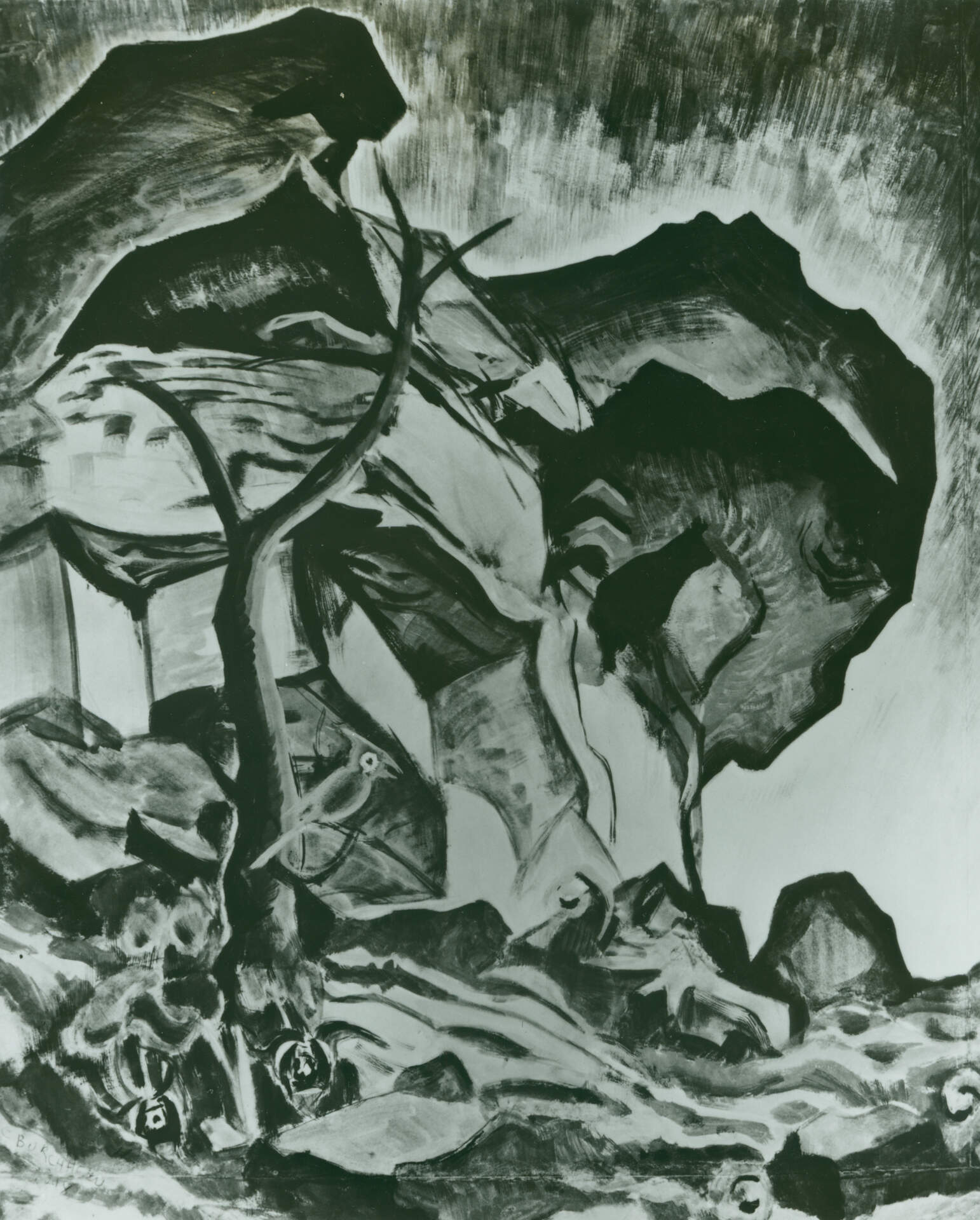Charles E. Burchfield (1893-1967)Song of the Peterbird
1918
watercolor on paper
26 x 19 inches
Early state of Sun and Rocks, 40 x 56 inches (Enlarged from Song of the Peterbird)
In 1939, Burchfield wrote in his Journals:
Working almost day and night on mounting, retouching and finishing (in cases where they were only half-done) early water-colors, chiefly the 1918 group, and many of the 1917. It started with the morning of the 9th – (recorded above) I thought that on such a morning I used to thrill at the song of the Peterbird. This recalled to me the attempt I made back in 1918, to capture on paper something of the haunting yearning feeling I experienced on hearing this bird’s call. I got the sketch out, and felt that it should be put into a final complete state. This led first to one & then another, until I was soon so immersed in work that I could scarcely take time off to eat, and often came out at night to mount sketches for the next day. I became so wrapt [sic] up in these ideas, that I longed for the old days — to hear a red-bird again, or a peter-bird, and in short to be a youth again.
In 1939, Burchfield also explained that "The Tufted Titmouse is named the Peterbird in some localities, on account of its plaintive call “Peter—Peter always twice repeated. It vies with the cardinal for the honor of being the earliest harbinger of Spring. Something of a ventriloquist, he seems to send his notes from some remote mysterious land. Its aforementioned plaintive character seems to suggest that the bird is alarmed at his surroundings, a feeling I have tried to express.”
As he expanded the painting, he wrote in 1944: "…I have turned to my work again. I have been reconstructing some of my early pictures – (“Spring Light” 1917 from 22 x 18 to 28 x 41; “Spring Evening” 1920 from 21 x 25 to 27 x 40; “Song of the Peterbird” 1918 from 25 ½ x 20 ½ to 36 x 52 –) The last mention shows great possibilities, and I hope to put into it all I ever felt about the Peterbird. The longing to hear this bird again, in the right surroundings and on the right kind of day (a brilliant day in March in the hollows) is so strong at times, as to make me almost ill.”
